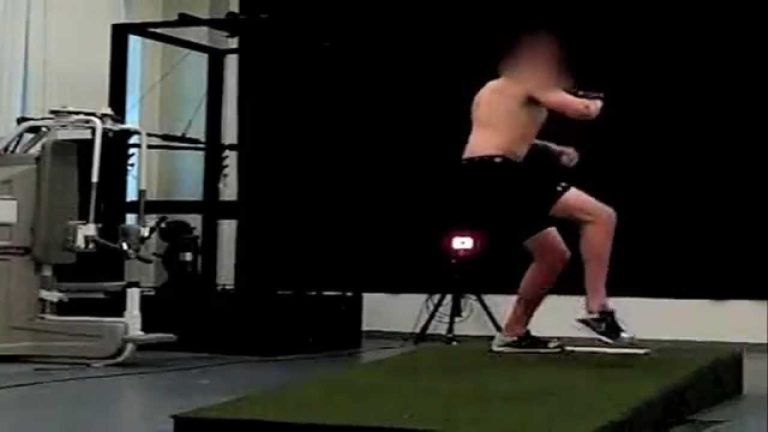
Elbow injuries in pitchers have become a prevalent concern in the world of baseball. With the increasing demands for pitchers to achieve faster pitches and more powerful throws, the risk of sustaining elbow injuries has significantly risen. These injuries not only affect the performance and careers of pitchers but also pose long-term consequences on their overall health. In this article, we delve into the common types of elbow injuries seen in pitchers and explore the preventive measures and treatment options available to mitigate these risks.
How much time does it typically take for pitchers elbow to heal?
Pitcher’s elbow, a common injury among athletes, requires proper care and patience for optimal healing. Recognizing the signs of this condition is crucial in determining the severity of the injury. Even minor strains in the elbow can take up to 6 weeks to fully heal, emphasizing the importance of allowing the body ample time to recover and regenerate.
However, there are cases where pitcher’s elbow necessitates more extensive treatment. Injuries that require Tommy John Surgery, a procedure to repair the ulnar collateral ligament, demand even more patience from athletes. The recovery process after this surgery typically takes a minimum of 12 months, highlighting the need for a comprehensive rehabilitation plan and a cautious approach to ensure a successful outcome.
In conclusion, healing pitcher’s elbow requires both time and careful attention to the signs exhibited by the injury. While minor strains may heal within 6 weeks, more severe cases that call for Tommy John Surgery demand at least a year for recovery. By understanding the nature of the injury and implementing proper rehabilitation measures, athletes can maximize their chances of returning to the game stronger than before.
What are the potential negative effects of pitching on your elbow?
Pitching in baseball can be detrimental to the health of your elbow. The act of overhand throwing exerts immense pressure on this joint, causing significant stress. This repetitive strain can result in severe overuse injuries, particularly in pitchers and other athletes who engage in frequent throwing activities. Therefore, it is crucial to be mindful of the potential harm that pitching can inflict on your elbow.
Repeatedly subjecting your elbow to the intense stresses of overhand throwing can have detrimental consequences. Baseball pitchers and other throwing athletes are particularly vulnerable to the risks associated with this motion. The high levels of strain placed on the elbow can lead to serious overuse injuries, which can severely impact an athlete’s performance and overall health. Consequently, it is essential to prioritize elbow care and take necessary precautions to minimize the potential damage caused by pitching.
What is the reason behind my 12 year old’s elbow pain following pitching?
If your 12-year-old is experiencing elbow pain after pitching, it could be due to a condition known as Little League elbow. This condition is caused by the repetitive throwing motion without enough rest, putting the cartilage growth plate under stress and leading to irritation. It is not uncommon for athletes who throw or engage in sports that involve repetitive stress on the inside part of the elbow to be affected by Little League elbow.
Safeguarding Your Arm: Expert Tips to Avoid Pitcher’s Elbow
Subtitle: Safeguarding Your Arm: Expert Tips to Avoid Pitcher’s Elbow
Paragraph: Aspiring pitchers, don’t let the fear of pitcher’s elbow dampen your dreams. Take proactive steps to safeguard your arm and keep it in top shape. Start by warming up adequately before every throwing session, gradually increasing intensity. Incorporate specific exercises targeting the rotator cuff and forearm muscles to build strength and stability. Remember to maintain proper pitching mechanics, focusing on a fluid and efficient motion that minimizes stress on the elbow. Avoid overexertion and overuse by following a structured training program that includes rest days to allow for muscle recovery. Lastly, listen to your body and promptly address any signs of discomfort or pain to prevent small issues from escalating into serious injuries. By implementing these expert tips, you’ll enhance not only your performance but also your arm’s longevity, ensuring a successful pitching career.
Unlocking the Secrets: The Science Behind Elbow Injury Prevention
Unlocking the Secrets: The Science Behind Elbow Injury Prevention
Elbow injuries can be debilitating, but understanding the science behind prevention can be a game-changer. Recent research has shed light on the key factors contributing to elbow injuries, paving the way for effective prevention strategies. Maintaining proper form during repetitive motions, such as throwing or lifting, is crucial to reduce the risk of overloading the elbow joint. Additionally, incorporating specific exercises that target the muscles around the elbow joint can help improve stability and prevent injury. By unraveling the secrets behind elbow injury prevention, individuals can safeguard their elbows and continue to engage in their favorite activities without fear of pain or strain.
When it comes to elbow injury prevention, knowledge is power. A thorough understanding of the biomechanics of the elbow joint can empower individuals to make informed decisions that protect their joint health. It is crucial to recognize the warning signs of overuse, such as pain or swelling, and to take timely action to avoid further damage. Additionally, seeking guidance from healthcare professionals, such as physical therapists or sports medicine specialists, can provide personalized advice on injury prevention techniques and rehabilitation exercises. By unraveling the science behind elbow injury prevention, individuals can take proactive steps to protect their elbows and enjoy a pain-free and active lifestyle.
In order to safeguard the longevity and performance of pitchers, it is essential to address the pressing issue of elbow injuries. By implementing preventive measures, such as proper pitching mechanics, regular strength and conditioning programs, and adequate rest periods, pitchers can significantly reduce their risk of sustaining elbow injuries. As the game of baseball evolves and the demands on pitchers continue to increase, it is crucial for players, coaches, and medical professionals to collaborate in order to develop innovative strategies that prioritize pitcher health and ultimately enhance the overall quality of the sport.
